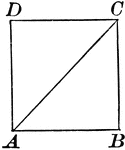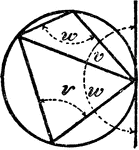
Quadrilateral Inscribed In A Circle
An illustration showing a quadrilateral inscribed in a circle that is tangent to a line.

Model Of Geometric Proportions
An illustration showing a quadrilateral model that illustrates the following relationships: a:b = c:d,…
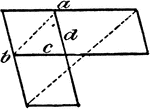
Model Of Geometric Proportions
An illustration showing a model that illustrates the following relationships: a:b = c:d, ad = bc. Product…
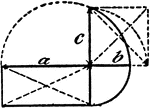
Model Of Geometric Proportions
An illustration showing a model that illustrates the following relationships: a:b = c:b, ab = c²,…

Model Of Geometric Proportions
An illustration showing a model that illustrates the following relationship: A:B = a:b.

Model Of Geometric Proportions
An illustration showing a model that illustrates the following relationships: a:x = x:a - x, x = √(a²…

Area of Parallelogram
"From Figure 4 he sees a parallelogram equal to a rectangle of the same base and altitude. Cut out and…

Area of Trapezoid
"The student sees the trapezoid is equal in area to a rectangle whose base is the average base of the…

Area of Trapezoid
"The student sees the trapezoid is equal in area to a rectangle whose base is the average base of the…
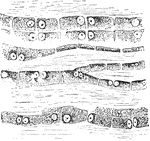
Structure of Tendon Cells
The cells in the tendons are arranged in long chains in the ground substance separating the bundle of…

Serratus Magnus Muscle
The serratus magnus muscle is a large curved quadrilateral muscle occupying the side of the chest and…

Pyramids
An illustration of two pyramids. A pyramid is a building where the upper surfaces are triangular and…
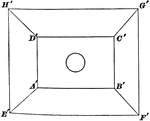
Circle Inside Concentric Rectangles
Illustration of a circle inside of 2 concentric rectangles whose vertices are connected by line segments.
Double Arch
Tangrams, invented by the Chinese, are used to develop geometric thinking and spatial sense. Seven figures…
Arch
Tangrams, invented by the Chinese, are used to develop geometric thinking and spatial sense. Seven figures…

Triangular Double Arch
Tangrams, invented by the Chinese, are used to develop geometric thinking and spatial sense. Seven figures…

Bear
Tangrams, invented by the Chinese, are used to develop geometric thinking and spatial sense. Seven figures…
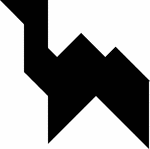
Camel
Tangrams, invented by the Chinese, are used to develop geometric thinking and spatial sense. Seven figures…

Lit Candle
Tangrams, invented by the Chinese, are used to develop geometric thinking and spatial sense. Seven figures…
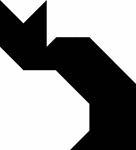
Sitting Cat
Tangrams, invented by the Chinese, are used to develop geometric thinking and spatial sense. Seven figures…
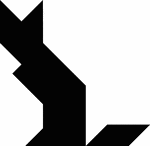
Cat
Tangrams, invented by the Chinese, are used to develop geometric thinking and spatial sense. Seven figures…
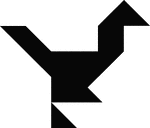
Cormorant
Tangrams, invented by the Chinese, are used to develop geometric thinking and spatial sense. Seven figures…

Cup
Tangrams, invented by the Chinese, are used to develop geometric thinking and spatial sense. Seven figures…
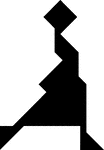
Dancer
Tangrams, invented by the Chinese, are used to develop geometric thinking and spatial sense. Seven figures…

Double Arrow
Tangrams, invented by the Chinese, are used to develop geometric thinking and spatial sense. Seven figures…

Diver
Tangrams, invented by the Chinese, are used to develop geometric thinking and spatial sense. Seven figures…

Dog
Tangrams, invented by the Chinese, are used to develop geometric thinking and spatial sense. Seven figures…

Dolphin
Tangrams, invented by the Chinese, are used to develop geometric thinking and spatial sense. Seven figures…

Duck
Tangrams, invented by the Chinese, are used to develop geometric thinking and spatial sense. Seven figures…

Egret Facing Forward
Tangrams, invented by the Chinese, are used to develop geometric thinking and spatial sense. Seven figures…
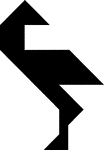
Egret Facing Backward
Tangrams, invented by the Chinese, are used to develop geometric thinking and spatial sense. Seven figures…

Shark
Tangrams, invented by the Chinese, are used to develop geometric thinking and spatial sense. Seven figures…
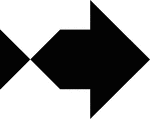
Parrot Fish
Tangrams, invented by the Chinese, are used to develop geometric thinking and spatial sense. Seven figures…
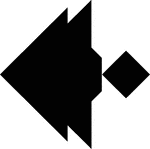
Angelfish
Tangrams, invented by the Chinese, are used to develop geometric thinking and spatial sense. Seven figures…

Beta Fish
Tangrams, invented by the Chinese, are used to develop geometric thinking and spatial sense. Seven figures…
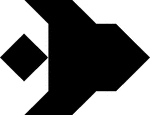
Hogfish
Tangrams, invented by the Chinese, are used to develop geometric thinking and spatial sense. Seven figures…
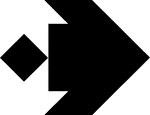
Flounder
Tangrams, invented by the Chinese, are used to develop geometric thinking and spatial sense. Seven figures…

Fisherman
Tangrams, invented by the Chinese, are used to develop geometric thinking and spatial sense. Seven figures…
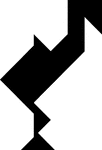
Flamingo
Tangrams, invented by the Chinese, are used to develop geometric thinking and spatial sense. Seven figures…
Flower
Tangrams, invented by the Chinese, are used to develop geometric thinking and spatial sense. Seven figures…
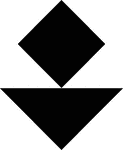
Flower
Tangrams, invented by the Chinese, are used to develop geometric thinking and spatial sense. Seven figures…
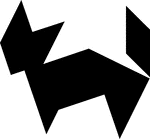
Standing Fox
Tangrams, invented by the Chinese, are used to develop geometric thinking and spatial sense. Seven figures…

Lying Fox
Tangrams, invented by the Chinese, are used to develop geometric thinking and spatial sense. Seven figures…

Fort Matanzas
Tangrams, invented by the Chinese, are used to develop geometric thinking and spatial sense. Seven figures…

Giraffe
Tangrams, invented by the Chinese, are used to develop geometric thinking and spatial sense. Seven figures…

Stingray
Tangrams, invented by the Chinese, are used to develop geometric thinking and spatial sense. Seven figures…

Hammer
Tangrams, invented by the Chinese, are used to develop geometric thinking and spatial sense. Seven figures…

Hexagon
Tangrams, invented by the Chinese, are used to develop geometric thinking and spatial sense. Seven figures…
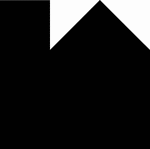
Small House
Tangrams, invented by the Chinese, are used to develop geometric thinking and spatial sense. Seven figures…

Medium House
Tangrams, invented by the Chinese, are used to develop geometric thinking and spatial sense. Seven figures…
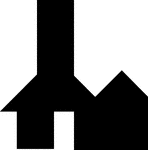
Large House
Tangrams, invented by the Chinese, are used to develop geometric thinking and spatial sense. Seven figures…

Indian
Tangrams, invented by the Chinese, are used to develop geometric thinking and spatial sense. Seven figures…

Iron
Tangrams, invented by the Chinese, are used to develop geometric thinking and spatial sense. Seven figures…

Kangaroo
Tangrams, invented by the Chinese, are used to develop geometric thinking and spatial sense. Seven figures…
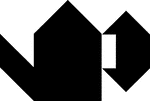
Kettle
Tangrams, invented by the Chinese, are used to develop geometric thinking and spatial sense. Seven figures…

Lighthouse
Tangrams, invented by the Chinese, are used to develop geometric thinking and spatial sense. Seven figures…
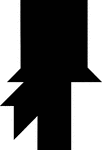
Bearded Man in a Tophat
Tangrams, invented by the Chinese, are used to develop geometric thinking and spatial sense. Seven figures…

Man
Tangrams, invented by the Chinese, are used to develop geometric thinking and spatial sense. Seven figures…
